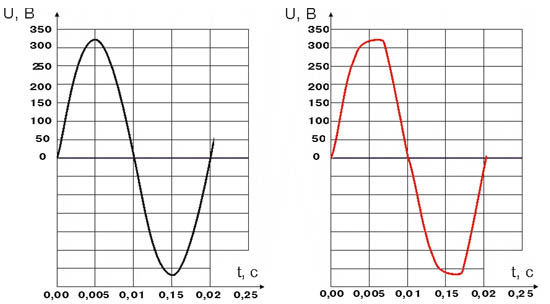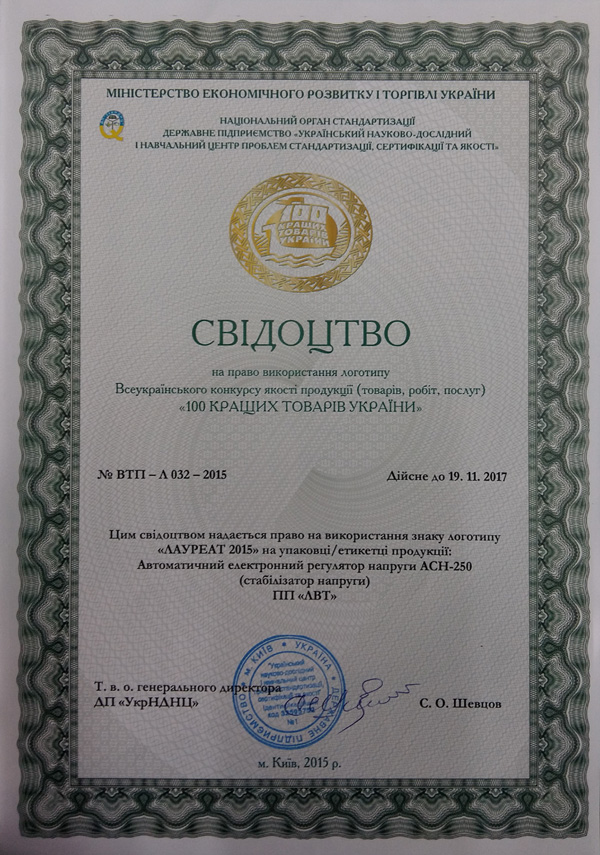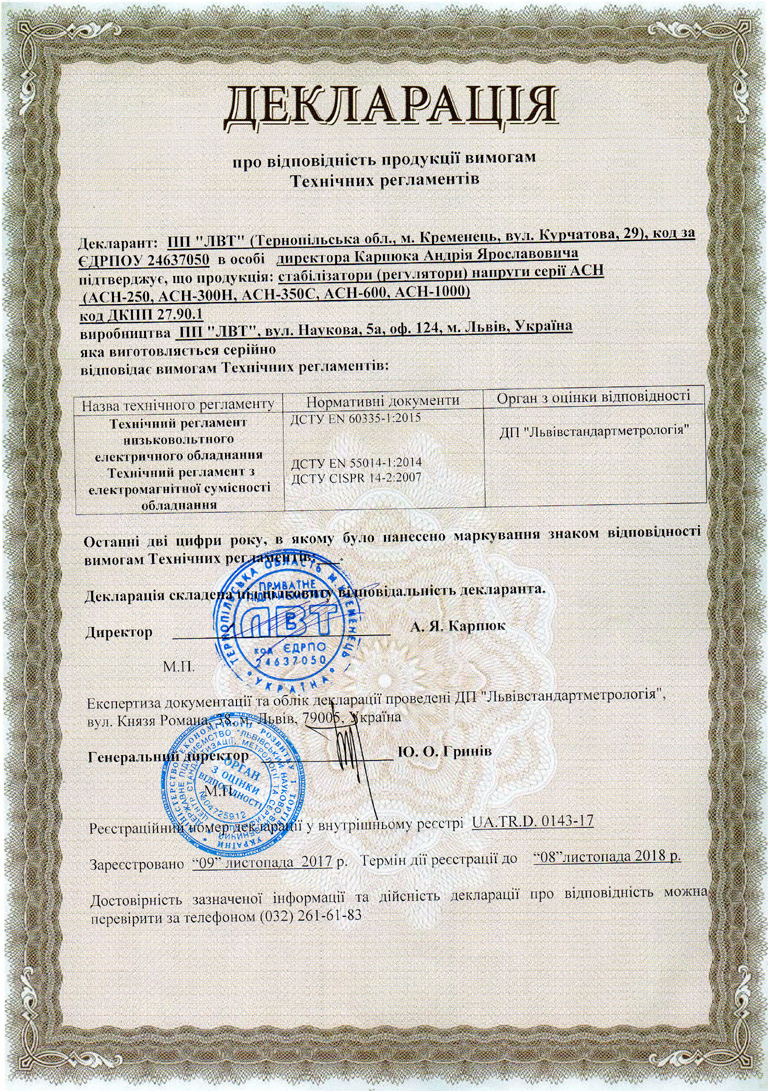Voltage measurement fluctuations
As we learned at the school physics classes, the electric current has the form of harmonic sinusoidal signal (Fig. 1), and its general specifications are the current voltage and frequency.
According to the state standard of Ukraine, the parameters of voltage fluctuations in our area must vary within 220 V ± 10%. Frequency, in accordance to these requirements, must remain within 50 Hz ± 1%.
For different reasons the form of voltage usually differes from the perfect picture of a sine wave shown on Fig. 1. Our state standard allows the fluctuations of such deviation within the range of 8%-12%, depending on its duration. Now let’s get back to our school geometry class. Different types of the loads on the grid “draw” a triangle or a trapezoid, for instance, out of our sine wave. It means that the shape of the voltage influences the work of the appliances powered by electricity, distorting technical parameters set by manufacturer.
How do we “catch” the moment of the curvature and fix it to save our appliance from the emergency situation, since this form of voltage also effects the results of the vast majority of measuring devices?
Greater number of home or semi-professional voltage testers fix voltage according to the standard algorithm, taking in account the ideal sinusoid. In fact, the picture looks different (Fig. 2). That’s why the results of measurement by these devices would always have an error. Its scope depends on the difference between an ideal sine wave and a real shape of voltage and the parameters of microprocessor and its program algorithm.
For example, your computer would “draw” the voltage fluctuations during the grid overloading as a trapeze. Herewith usual measuring instruments would not be able to respond adequately to this voltage surge, because they are focused only on perfect sine wave. Such error, as studies show, can reach 20%.
Let’s look at another example. Imagine any voltage stabilizer, which measures according to the standard algorithm of our beautiful sine wave (that’s how mostly all cheap imported stabilizers work), connected to the UPS. Let’s suppose that the output voltage is different from our current ideal index of 220 V. In this case the stabilizer “gets the feeling” of not 220 V, but only 160 V. According to this, it “thinks” that 60 V should be added to voltage. As a result, our device gets 280 V of voltage, and the stabilizer doesn’t even “know” about its error and “thinks” that there is still 220 V at the output.
To see the real picture we need to measure the voltage at the end of stabilizer by professional voltmeters, which can fix adequate voltage values.
Just for these cases, our stabilizers ACH are equipped with modern high-speed processors and unique software algorithms that make it possible to accurately measure the voltage at the input and the output.

Pic. 1. Pic. 2.
Pic. 1. An ideal sinusoid.
Pic. 2. A typical illustration of voltage that is significantly different from sinusoidal one (deviation from the ideal is 3-7%).
11.08.2010







